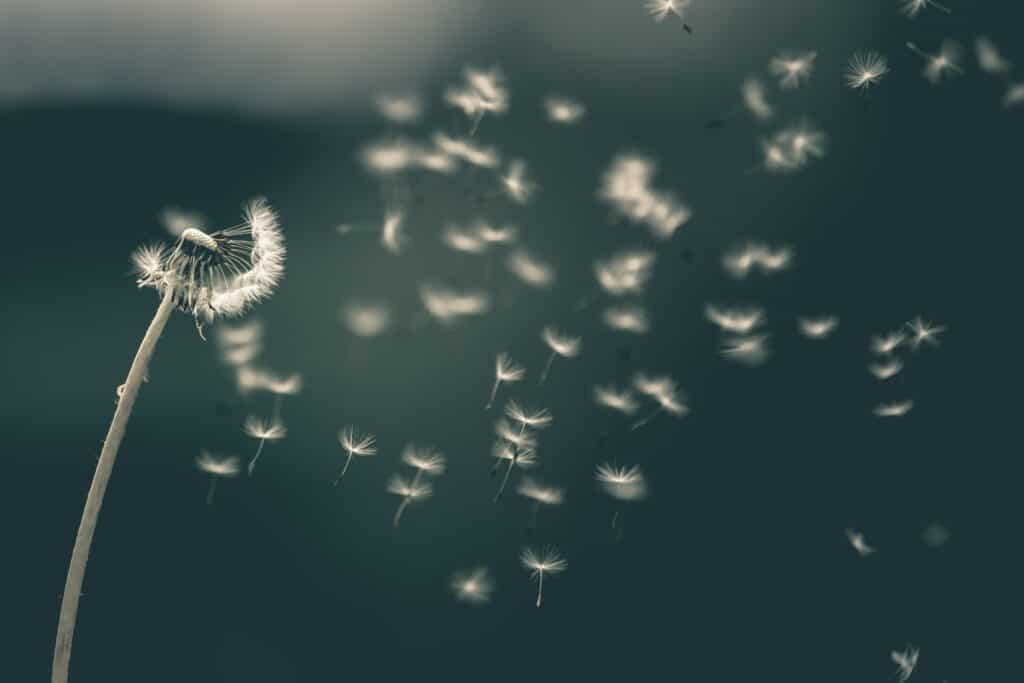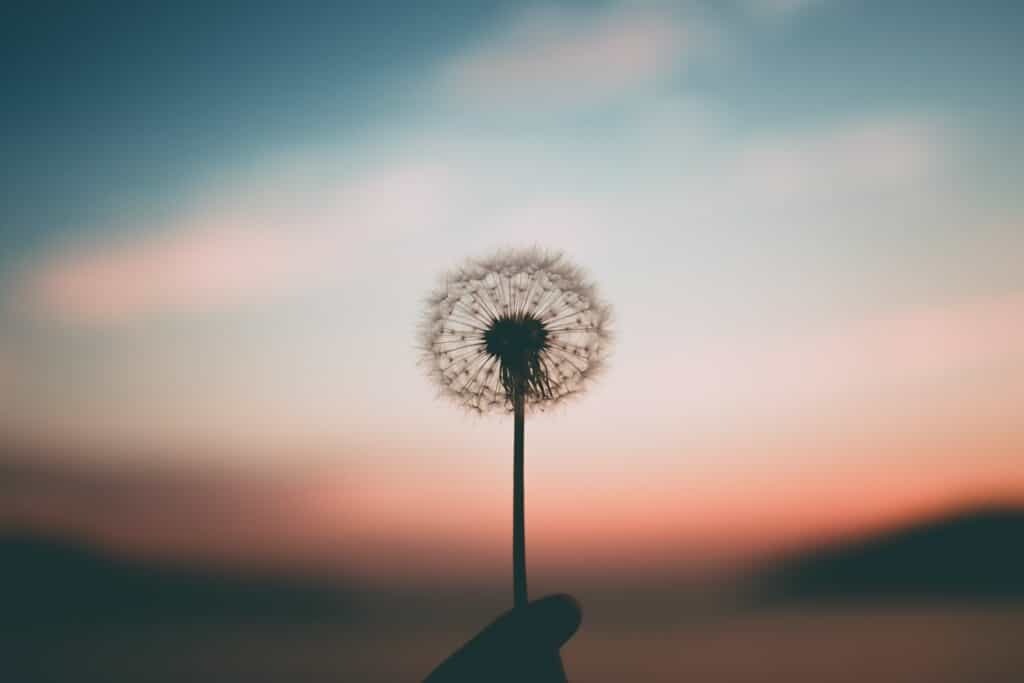Flower Glossary is reader-supported. When you buy through links on our site, we may earn an affiliate commission.
Dandelions are one flower that everyone, from children to adults, can identify without pause. Their little yellow buds have been around for ages, sometimes annoying, sometimes fun, sometimes even dinner.
Table of Contents
Background
The most common variety of dandelion is known as the taraxacum officinale, while the word dandelion is from the French dent-de-lion which means lion’s tooth. There is another variety called taraxacum erythrospermum, distinguishable only by the red tint on the stem of the seeds and the triangle shape of their leaves.
They can grow just about anywhere under any conditions. Dandelions have been loved world round for centuries, being used for everything from cooking to medicine, and even magic.
Though their yellow heads are flowers to us, and they’re actually a member of the daisy family, botanists consider the dandelion to be an herb, the entire body of a dandelion from bloom to stem is edible. They actually have more nutrients and are better for you than many of the vegetables in your garden.

Health Benefits
A rich source of vitamins C and A, potassium plus iron, dandelion leaves were used over the centuries for medicinal purposes, including as a treatment for dental issues, baldness and dandruff, liver function, and even mental ailments such as depression and lethargy. They’re even an antioxidant, containing beta-carotene polyphenols. Studies have shown that dandelion roots and leaves can reduce cholesterol and boost the immune system.
In Your Yard
While many people think of dandelions as weeds that are a nuisance in the yard, they’re actually quite good for the grass as their roots spread wide, acting as an aerator for the soil, while their roots also soak up nutrients from the deeper soil and spread those nutrients throughout the yard, working as fertilizer. However, since dandelions aren’t exactly wanted in a yard, many homeowners have discovered just how difficult it is to get rid of them; dandelions are a hard flower to kill.
They spring up virtually overnight, growing so quickly it’s next to impossible to catch them before they’ve had time to flower, and they go to seed within days of flowering, taking only the wind to spread the seeds all over the yard, and the process begins again. Even though they grow so fast, they live for years and their roots grow down as far as 15 feet.
Worse, if the root is cut in half, it clones itself and a whole new plant can grow from just an inch of root left behind. The safest way to get rid of unwanted dandelion growth is to let your grass grow just a bit longer, about four inches tall, to create shade on the lower soil. Dandelions need sunlight to grow and won’t survive in a shady area.
Dandelion Symbolism
Dandelions are a symbol for healing, whether from emotional or physical pain, and also surviving hard times as dandelions are the most persistent flower that never gives up. When you give someone a single dandelion or a bouquet, you’re giving a message of hope, telling the recipient to not give up and to persevere to sunnier times ahead.

Fun for Kids (and Adults!)
Don’t think of dandelions as just a pest to your yard, they’re beautiful and harmless, and loads of fun for children. From making wishes on the dandelion puff to picking a little bouquet without getting in trouble, kids have been using dandelions as playthings for centuries. With their flavorful and nutritious qualities, you could consider them a part of your garden.
FAQs
What is wrong with dandelions?
While dandelions are actually good for your lawn and provide rich nutrients to the growing grass, their prickly, misshapen leaves and short stature give them a weedy appearance that’s somewhat of an eyesore. Their durability, deep root system, ability to spread, and quick growth make them a pest that’s hard to get rid of.
How do you eat dandelions?
Dandelions can be eaten in just about any way you can think of. Dandelion greens are often added to salad and can be added to any dish as an herb. Dandelions are versatile, their dried roots are sold as a coffee substitute in stores, can be used to make tea, and there’s even dandelion wine. It can be used to make ice cream and baked desserts, as well as savory dishes such as quiche.
Can you really eat dandelions?
Yes! Dandelions are an extremely healthy addition to any diet. Rich in antioxidants, vitamins, potassium, and iron, dandelions help maintain the health of many parts of the body.
Are dandelions weeds?
No, dandelions aren’t weeds. Botanist consider them to be herbs, though they are part of the daisy family and are truly flowers.
What does dandelion do to your body?
Dandelions are full of antioxidants that help protect cells from breaking down. They have been shown to lower cholesterol, increase liver function, help manage diabetes, lower blood pressure, and also work as an anti-inflammatory. Some studies have shown potential for the dandelion to help with cancer, reducing the growth of colon, pancreatic, and liver cancer.
Dandelion tea is perfect for helping the digestive system while boosting your immune system and even aiding in weight loss. Limited research has also shown that they are helpful at reducing the damage caused by UV rays on the skin.
Sources:
Ten Things You Might Not Know About Dandelions
10 health benefits of dandelion
The Dandelion Flower: Its Meanings & Symbolism
Why you might want to leave those dandelions alone